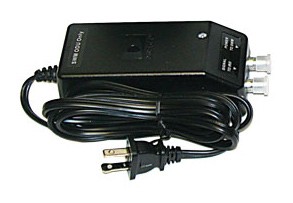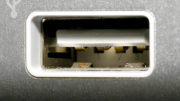Quick answer: no. If you’re a regular residential DIRECTV customer, there’s only one power supply to use these days, and it’s the PI-29Z power supply. You’ll notice that the PI-29 is grey while the PI-21 is black, that’s the easiest way to tell them apart.
What’s the difference?
The PI-21 only supplies 21 volts and that’s not enough to keep a SWM up and running. (SWMs built into the dish are a little better with power) If you use a PI-21, it may work at first but you’ll start running into problems, possibly including a broken SWM, pretty quickly.
Why do you need more voltage?
In order to really understand the difference between a 21-volt power supply and a 29-volt one you need to understand a little bit about how satellite works.
First is the matter of getting voltage to the dish. With RG6 solid copper center conductor cable, you can expect a voltage drop of about 3 volts per 100 feet. I use that distance because you shouldn’t ever have the power inserter further than 100 feet. In general, 50 feet is preferred, which reduces the voltage drop to about 1.5 volts.
When the current gets to the dish it has to do two things. First of all it has to power the dish meaning it has to provide at least 18 volts. Traditional satellite dishes require this much voltage. In order to distinguish between odd transponders and even ones, a different amount of voltage is added to the line. If the signal comes from the odd transponders, you will get 13 volts on the line. If it comes from the even transponders, you will get 18 volts on the line. All a receiver needs to do in a case like that is read the voltage. Of course that’s the theory.
The reality is that for even transponders, the receiver is looking for more than 16 volts. If it doesn’t find more than 16 volts it assumes it’s looking at the odd transponders. This range is used so that there can be some voltage drop on the line. You need to start with 18 volts, but you can end up with less.
SWM complicates things
However, when you’re talking about SWM, things get a little more complicated. The 13 and 18 volt measurements really only exist between one part of the dish and the other, where the built-in SWM multiswitch is. This multiswitch does a lot — it reads up to six different types of signals, interprets requests from up to 13 receivers, and builds a whole new signal composed of different bits from different satellites.
This all takes a little bit of power itself. The multiswitch component uses power that would otherwise be required for the dish and that’s why you need more to spare. The 29 volt power supply provides that extra power. 21 volt power supplies don’t.
Is there any case where the 21-volt power inserter is used?
Officially, no. You can still use the black power inserter with an older SWM-enabled dish, but for the current Reverse Band dishes and SWM-30 multiswitches, you will need the 29-volt power supply. If the black one is in your home and working well, there’s no need to change it but if you’re buying something new, always buy the gray one.





